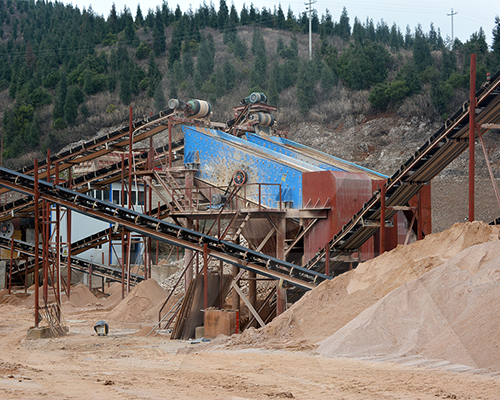The Role of Vibrating Screens in Iron Ore Processing Plants
Vibrating screens play a crucial role in the efficient processing of iron ore in modern mining operations. These machines are essential for separating and sizing various materials, ensuring that only the desired particles are sent forward for further processing. In iron ore processing plants, vibrating screens are indispensable in achieving the high precision and efficiency required to meet production demands.
One of the primary functions of vibrating screens in an iron ore processing plant is the classification of materials. Iron ore is often mined in large chunks that need to be broken down into smaller, more manageable sizes before further processing. The vibrating screen separates these chunks into different size fractions, allowing for more efficient downstream processes such as crushing, grinding, and beneficiation. This classification process ensures that the plant operates at optimal efficiency by reducing energy consumption and maximizing throughput.
Another critical application of vibrating screens in iron ore processing is the removal of unwanted materials. As iron ore is extracted, it often comes mixed with various impurities such as dirt, rocks, and other minerals. These contaminants can reduce the quality of the final product and complicate further processing steps. Vibrating screens are used to remove these impurities, ensuring that only the purest ore is processed further. This step is vital in maintaining the high standards required for the production of steel and other iron-based products.
The design and operation of vibrating screens are tailored to the specific needs of iron ore processing plants. For instance, the screens are often equipped with different types of media, such as woven wire mesh or polyurethane panels, depending on the nature of the ore and the required separation size. Additionally, the amplitude and frequency of the screen’s vibrations can be adjusted to achieve optimal performance, depending on the characteristics of the ore being processed.
In addition to their role in classification and impurity removal, vibrating screens also contribute to the dewatering process in iron ore processing plants. After the ore has been ground and processed, it often needs to be dewatered to reduce moisture content before further treatment or transportation. Vibrating screens are highly effective in this regard, as they can separate the water from the ore, leaving behind a drier product that is easier to handle and less costly to transport.
The efficiency of vibrating screens in iron ore processing plants also depends on regular maintenance and monitoring. Over time, the screens can become clogged or damaged, reducing their effectiveness and potentially leading to costly downtime. Therefore, operators must regularly inspect the screens, clean them, and replace worn-out parts to ensure continuous and efficient operation. Advanced monitoring systems are often used to detect any issues early on, allowing for timely intervention and minimizing disruptions to the production process.
In conclusion, vibrating screens are indispensable in the processing of iron ore, playing a vital role in the classification, impurity removal, and dewatering of the ore. Their ability to improve the efficiency and quality of the processing plant makes them a key component in modern iron ore production. With proper maintenance and operation, vibrating screens contribute significantly to the success of mining operations, ensuring that high-quality iron ore is produced efficiently and cost-effectively.
- > Cone Crushers: The Core of Brazil’s Iron Ore Crushing Lines
- > Common Issues Associated with Jaw Crushers and Their Solutions
- > Energy-Efficient Ball Mills by HSM: Widely Used in Various Industries
- > The Role of Spherical Bearings in Cone Crushers
- > Advanced Features of the PEW Series Jaw Crusher for Gold Mining
- > Portable Jaw Crushers for Quarry Operations in South Africa: Key Features and Benefits
- > Jaw Crusher Solutions for the Crushing Challenge of High-Moisture Clay Ore in Indonesia
- > Jaw Crusher Processing Technology for Open-Pit Gold Mining in Indonesia
Hot Product


Online




Message

